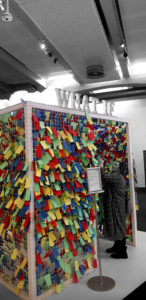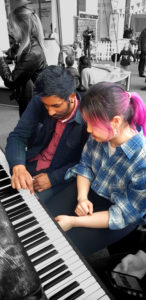
According to trends in business and innovation studies learning to play again is the way to unlocking creative potential within one’s mind. To let go of what you think you know, strip everything back, and re-learn the basics can spark creative solutions to real life business problems. The MA Creativity: Innovation and Business Strategy students went to WeTheCurious in Bristol to test this theory for themselves. This is my record of the events of the day as one of these students.
8.30 am: The MA Creativity students meet to catch the train to Bristol from St David’s with creativity fuelling coffee in hand. Despite the early start, the excitement of implementing some theory in a new place keeps us awake and expectant of the possible creative solutions we could employ into real life business scenarios and our up-and-coming deadlines.
10.00: We are met by Anna Kiernan, our module convenor, and lead by workshop leaders into WeTheCurious. Having never been to the science and innovation think tank before, I wasn’t sure what to expect. The place was busy with school children and I was uncertain of the activities ahead. We were taken to a quiet learning room and introduced to our first workshop on invention and innovation.
The session itself consisted of play with pulley’s and levers. The workshop is usually run with much younger children, and I initially found myself resisting it. However, after I began getting hands on with the equipment and working as part of a team, I found myself beginning to rethink and re-explore trails of thought I had long left abandoned. In adult life we leave so much of our old joys and interests behind to specialize and surround ourselves with what we have come to take on as a profession. Rediscovering things we have left behind and forgotten cannot only bring back fond memories, but they can spark a part of your brain left to the dust. This can trigger new ideas and new creative approaches to problem-solving. It can also promote the part of the brain that innovates and invents. I found the workshop comforting and fun. I was reminded of a method of learning that I hadn’t indulged in for a long time. This was an oddly satisfying and mindful practise.
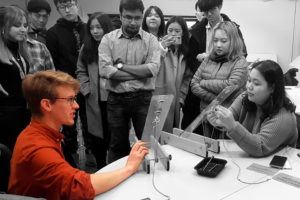
12.45: After the workshop we were given a short half hour break to explore WeTheCurious before our next workshop. WeTheCurious is home to fantastical ways of looking at science and animation. One section of the space is entirely devoted to Aardman animations, whose studio is based in Bristol. I found this of especial interest as not only do I have a passion for animation and creative production solutions, but I had written a business plan for Aardman animations earlier in my MA course. For me, this section of WeTheCurious connected studied practical theory with my personal creative business interests.
WeTheCurious includes plenty of interactive opportunities to experiment and play with science in a way that is practical and hands on. My course mates and I spent our time laughing and playing with light installations and holograms. This led to a discussion with a member of our party about how we might implement a similar installation within a pop-up event or exhibition space of our own. WeTheCurious was a fantastic place to get thinking about how we might want to construct something as part of an exhibition or branded immersive experience within a real-life creative curator and executioners’ role.
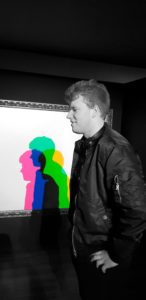
1.15: The group reconvened for our second workshop on psychology. This session was longer running and still intended for a younger audience. However, understanding the basics of brain function and psychological responses is essential when considering workplace etiquette, consumer identities, and how your branding can influence and persuade on a subconscious level. The session looked at the senses, which I found was applicable to understanding and altering audience responses in several creative fields. We also covered memory and got to thinking how this could be implemented into branding. Using basic psychology is a fantastic way of coming up with new branding styles and images that are memorable and everlasting in the mind of the consumer.
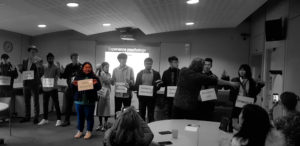
The workshop explored the senses through tasting drinks and considering psychological cues that might give the allusion that we were drinking something different to what we were. The session covered memory by having a set-up interruption in the form of an argument happen mid-session. We then tried to recall the details of the induvial who disrupted the session as a psychological test. The workshop used us as guinea-pigs in our exploration of the science of the human brain. This approach to teaching was immersive and engaging as well as theatrical and astonishing. The way this session was ran was also a lesson in engaging one’s audience and capturing interest. These techniques are essential in developing successful creative products, content, and strategies.
2.45: The workshops were concluded for the day and we were set the task of further exploring WeTheCurious and finding something interesting or inspiring that we might take away and apply some of our course theory to. Though I hadn’t anticipated it at the time, the workshops at WeTheCurious and the objects of play that I found there have been a source of reflection and contemplation for a long time after visiting. WeTheCurious is a fun and inspirational place for all ages and embracing one’s inner child is the perfect way to take a crucial step-back from your projects and improve them.
The WeTheCurious field trip was an immersive exploration of ideation that couldn’t have been replicated in a university seminar room or office space. It is our job now to try and re-create this method of problem solving in our everyday working lives.
